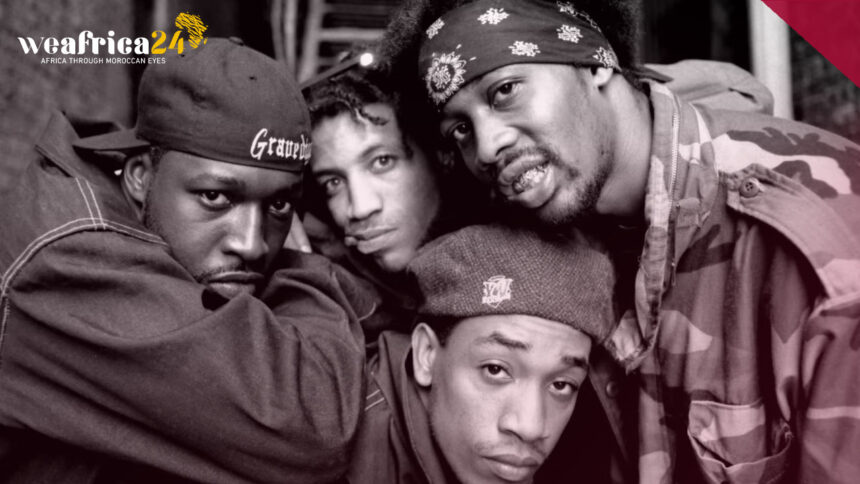Emerging half a century ago as a cultural force, hip-hop stands as a testament to the power of innovation, creativity, and resilience. Born in the heart of New York’s Bronx, this dynamic amalgamation of culture, style, and movement provided young African-Americans an avenue to transcend the shackles of poverty and discrimination. With resounding impact, hip-hop extended its reach to every corner of the United States and beyond, amassing billions of dollars across the realms of music, sports, and fashion.
Having matured into a cornerstone of American identity, hip-hop’s rapid ascent has defied initial industry skepticism, disrupting a music landscape that was initially reluctant to embrace its raw essence. Yet, even in its evolution, hip-hop continues to encapsulate the spirit of the American youth, resonating with its vigor and aspirations.
The official birth of hip-hop traces back to a singular date: August 11, 1973. On this momentous day, within the confines of a public housing complex at 1520 Sedgwick Avenue in the Bronx—a borough that stands synonymous with its emergence—Jamaican-born DJ Clive Campbell, known as DJ Kool Herc, inaugurated a revolution. Elevating the art of music manipulation, DJ Kool Herc ingeniously employed two turntables to isolate rhythmic sequences and percussive fragments, infusing them into the airwaves to conjure the precursor to the iconic “breakbeat,” a foundational pillar of hip-hop’s auditory landscape.
Birth of a Movement
Reminiscing on the transformative journey, hip-hop historian Ralph McDaniels, a pioneer in capturing the nascent New York rap scene on film, reflects, “Celebrating 50 years is nothing short of extraordinary. At the outset, these elements held scant significance. Back when we commenced, the idea of hiring a DJ, an MC (Master of Ceremonies), or breakdancers was met with resistance.” McDaniels, an archival guardian who has safeguarded decades of visual and auditory remnants, strives to transmit the essence of an era through his meticulously curated collections.
August 11th, 1973, marks not just a commemorative date, but the inception of an era-defining celebration. This milestone holds deep resonance for McDaniels, who regards it as the embodiment of hip-hop’s genesis, symbolizing the origin of it all. The convergence of a diverse array of talents, united by a shared passion, birthed a phenomenon that continues to resonate profoundly.
In homage to the August 11th milestone half a century ago, DJ Kool Herc is poised to headline a monumental concert at the hallowed grounds of Yankee Stadium in the Bronx. The stadium, renowned as the home of the eponymous baseball team, will be graced by other luminaries of rap, including Grandmaster Caz, Kurtis Blow, The Sugarhill Gang, Roxanne Shanté, as well as contemporary icons like Lil Kim, Ice Cube, Snoop Dogg, and Run DMC.
Embracing the significance of this jubilee, New York City springs to life with a tapestry of cultural endeavors throughout the summer months. Graffiti art exhibitions, breakdance showcases, “block parties,” and concerts collectively contribute to a vibrant commemoration of hip-hop’s enduring legacy.
Violent Life in New York

Recently, Grandmaster Flash, an architect of the genre, born Joseph Saddler, aged 65, took the stage in a Bronx park, joined by his former collaborators Melle Mel (Melvin Glover) and Scorpio (Eddie Morris) of the Furious Five. Their performance conjured the electric ambiance of the 1970s and 1980s, eras defined by the vibrant pulse of New York City.
In an era marked by adversity—plagued by socioeconomic hardships, drug epidemics, and rampant crime—the inception of the first “block parties” infused a breath of life into the milieu. These gatherings, originating as respites from the harsh realities of life in New York, particularly for marginalized communities grappling with social and racial inequities, epitomized the spirit of unity and collective escape.
In the annals of history, hip-hop’s narrative is etched as a remarkable journey of cultural metamorphosis—a movement that defied odds, united voices, and reshaped the world. From humble beginnings in the Bronx to its global ascendancy, the 50-year evolution of hip-hop stands as an enduring testament to the power of creativity, tenacity, and cultural resonance.







